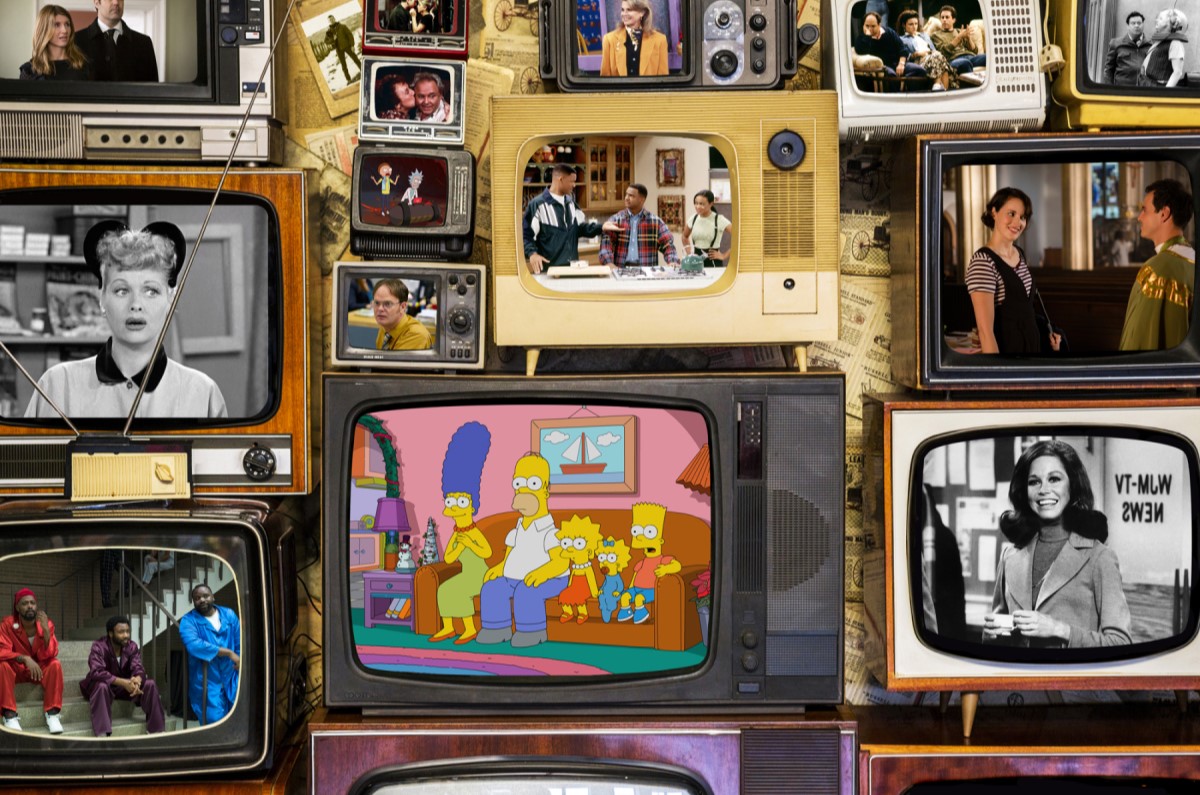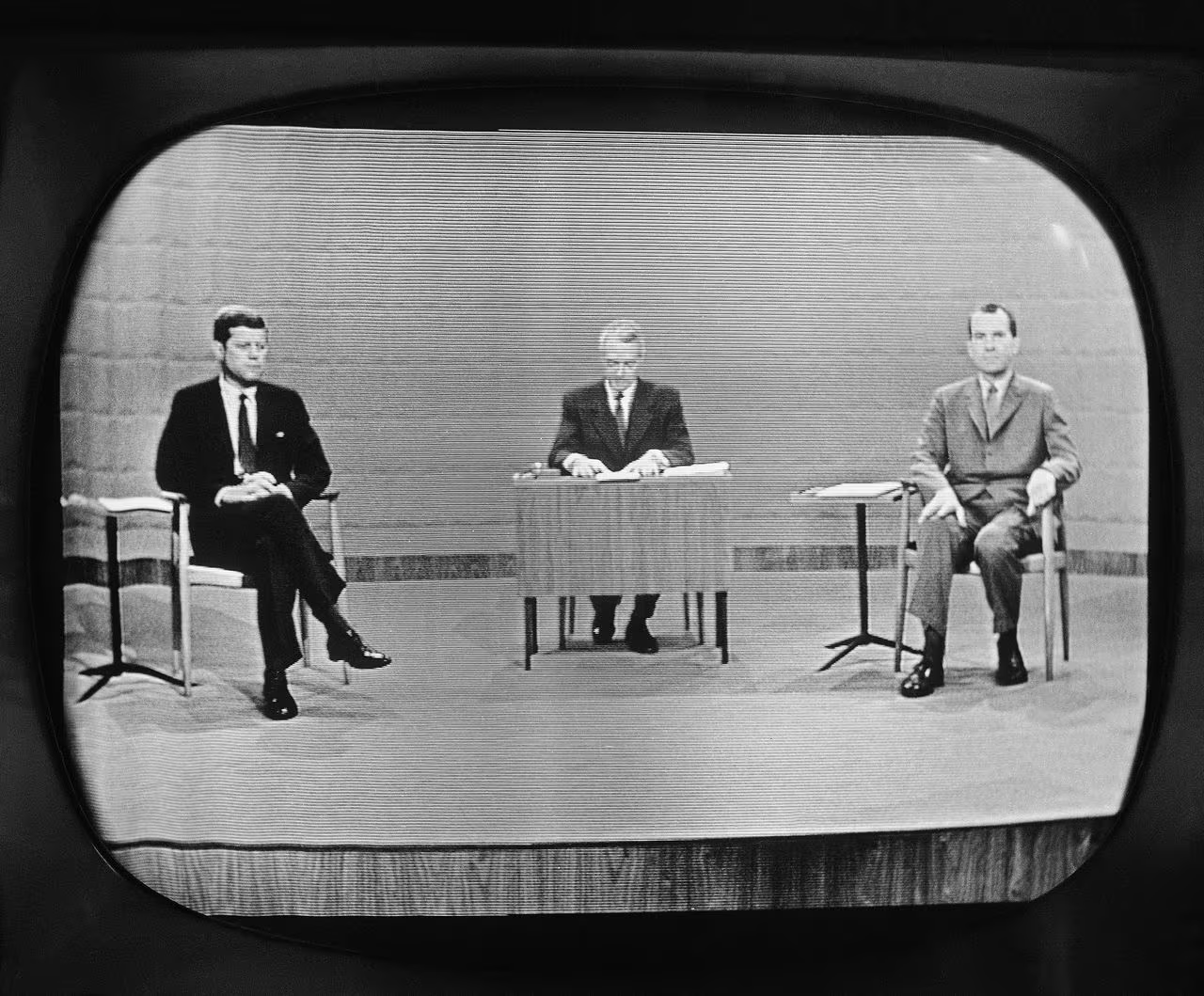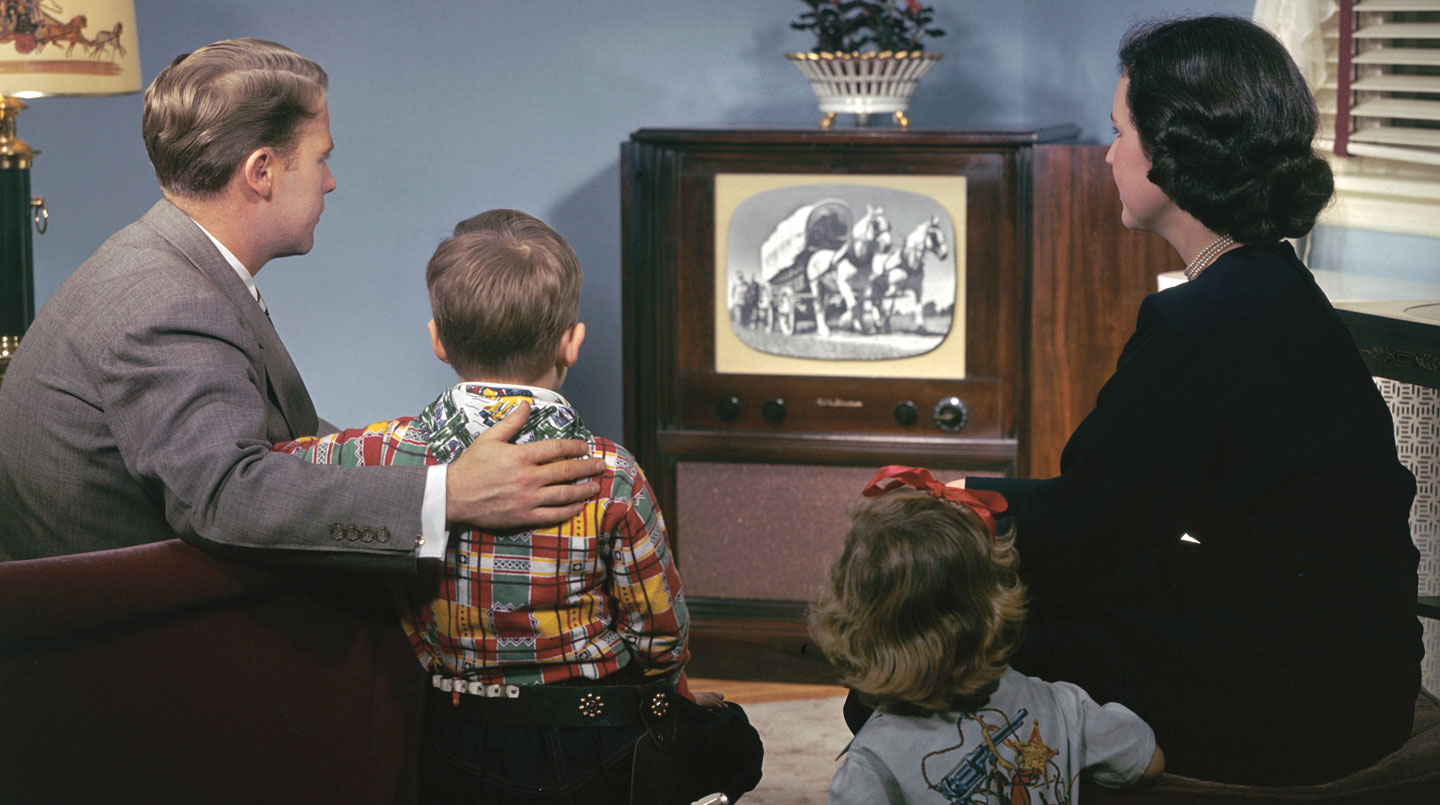Home>Technology>Home Entertainment Systems>How Did The Television Industry Affect The US Economy?


Home Entertainment Systems
How Did The Television Industry Affect The US Economy?
Modified: October 20, 2024
Discover the impact of the television industry on the US economy with a focus on home entertainment systems. Explore the economic growth and opportunities created by this influential sector.
(Many of the links in this article redirect to a specific reviewed product. Your purchase of these products through affiliate links helps to generate commission for Storables.com, at no extra cost. Learn more)
Introduction
The television industry has long been a dominant force in the entertainment landscape, captivating audiences with its diverse range of programming. Over the years, television has not only provided countless hours of entertainment but has also had a profound impact on the US economy. From creating employment opportunities to driving technological advancements, the television industry has played a significant role in shaping the economy and influencing other sectors.
The rise of the television industry in the US can be traced back to the early 20th century, when televisions became a staple in American households. With the advent of cable and satellite TV, the industry experienced a boom, offering viewers a plethora of channels and programming options.
This article will delve into how the television industry has affected the US economy, exploring its influence on employment, advertising and marketing, GDP contributions, technological advancements, and the challenges it has faced along the way.
Key Takeaways:
- The television industry has significantly impacted the US economy through job creation, technological advancements, and its influence on advertising and marketing, shaping consumer behavior and driving economic growth in related sectors.
- Despite facing challenges such as streaming competition and changing viewer preferences, the television industry continues to evolve and adapt, embracing new technologies and creating compelling content to thrive and contribute to the US economy.
The Rise of the Television Industry in the US
The television industry has undergone incredible growth and evolution since its inception, becoming a dominant force in American households and culture. The introduction of television sets in the early 20th century sparked a revolution in entertainment, providing a visual medium for storytelling and information dissemination.
In the 1950s, television ownership skyrocketed as more families embraced this new form of entertainment. The popularity of television shows such as “I Love Lucy,” “The Ed Sullivan Show,” and “The Honeymooners” captured the hearts and attention of American viewers, solidifying television’s role as a primary source of entertainment.
With the advent of cable and satellite television in the 1980s, the industry experienced a seismic shift. Viewers now had access to a wide range of channels and programming options, from news and sports to movies and reality shows. This expansion in content choices was a game-changer, allowing viewers greater control over what they watched and when they watched it.
The rise of streaming services in recent years, such as Netflix, Hulu, and Amazon Prime, has further disrupted the industry and transformed how audiences consume television content. With the ability to stream shows and movies on-demand, viewers have unprecedented freedom in choosing what, when, and how they watch.
The rise of the television industry has not only changed how we consume entertainment but has also created a significant number of employment opportunities. The demand for talented writers, actors, producers, directors, and crew members has grown exponentially as more television shows and streaming content are produced.
Moreover, the television industry has also fueled growth in related sectors, such as technology, advertising, and marketing. Technological advancements in camera equipment, editing software, and streaming platforms have spurred innovation and created jobs in these fields.
Overall, the rise of the television industry in the US has been a transformative force, shaping the way we are entertained and influencing various sectors of the economy. Its continuous evolution and ability to adapt to changing audience preferences ensure that it will remain a significant contributor to the economy for years to come.
Employment Opportunities Created by the Television Industry
The television industry has significantly contributed to job creation in the US, providing employment opportunities for a wide range of professionals. From writers and actors to producers and technicians, the industry relies on a diverse workforce to create compelling content for audiences to enjoy.
One of the most prominent areas of employment in the television industry is acting. Actors play a crucial role in bringing characters to life and captivating viewers. From lead roles in popular television series to supporting characters in commercials, actors have an array of opportunities to showcase their talent and build successful careers.
Behind the camera, there are numerous job opportunities in production and post-production. Producers oversee the entire television production process, from conceptualization and budgeting to casting and scheduling. Directors guide actors and crew members to bring the script to life on screen.
Technical roles in the television industry are also essential for ensuring smooth production. Camera operators, lighting technicians, sound engineers, and editors bring technical expertise to the table, creating visual and auditory elements that enhance the viewer’s experience.
Additionally, the television industry creates employment opportunities in writing and script development. Writers and scriptwriters play a crucial role in crafting compelling storylines and dialogue that capture viewers’ attention. From sitcoms to dramas, the demand for talented writers remains high.
Furthermore, the proliferation of digital platforms and streaming services has opened up new avenues for employment in the television industry. Content creators on platforms like YouTube and TikTok have the opportunity to build their own audience and monetize their creations.
It is not just the creative and technical roles that benefit from the television industry’s growth. Supporting industries, such as catering, transportation, and set design, also provide employment opportunities for individuals involved in the production process.
Overall, the television industry serves as a significant job creator in the US. From on-screen talent to behind-the-scenes professionals, the industry offers diverse and rewarding careers for those passionate about the world of television and entertainment.
Impact on Advertising and Marketing Sector
The television industry has had a profound impact on the advertising and marketing sector, revolutionizing how companies promote their products and reach their target audiences. Television advertising remains a powerful tool for businesses to create brand recognition and drive consumer behavior.
One of the main advantages of television advertising is its ability to reach a wide audience. With millions of viewers tuning in to their favorite shows, advertisers can showcase their products or services to a captive audience. This mass exposure helps companies build brand awareness and reach potential customers on a large scale.
Television advertising also allows for creative storytelling and engaging visuals. Advertisers can effectively convey their brand messaging through compelling narratives, memorable characters, and stunning visuals. This form of marketing has the power to evoke emotions, generate interest, and establish a connection between the audience and the brand.
Moreover, television advertising offers precise targeting capabilities. Advertisers can select specific time slots and channels to target their desired demographic or geographic region. This level of targeting ensures that companies can maximize their advertising budget by reaching the most relevant audience for their products or services.
The rise of interactive advertising on television has further transformed the marketing landscape. Interactive ads provide viewers with the opportunity to engage directly with the brand, whether through polls, quizzes, or interactive games. This level of interaction creates a deeper level of engagement and allows companies to gather valuable data about their audience’s preferences and behaviors.
Additionally, the television industry has influenced the rise of product placement in popular shows and movies. Strategic partnerships between brands and television productions allow for seamless integration of products and services into the storyline, creating organic brand exposure and influencing consumer behavior.
The introduction of streaming services has also impacted advertising in the television industry. While traditional television relies heavily on commercial breaks, streaming platforms offer opportunities for targeted ad placements within the content itself. This form of advertising ensures that ads are delivered to audiences who are actively engaged in the content they are consuming.
Overall, the television industry’s impact on the advertising and marketing sector cannot be overstated. Television advertising remains a dominant force in reaching consumers, offering precise targeting, creative storytelling, and the ability to generate brand recognition and consumer behavior.
Television Industry’s Contribution to GDP
The television industry has a significant impact on the US economy, contributing to the country’s Gross Domestic Product (GDP). The industry’s influence on the economy can be measured through various factors, including direct contributions, job creation, and the ripple effect on related industries.
Directly, the television industry contributes to GDP through advertising revenue and subscription fees. Advertisers invest heavily in television commercials, reaching millions of viewers and promoting their products or services. These advertising expenditures directly contribute to the revenue of television networks and stations, which in turn contributes to the overall GDP.
Subscription fees from cable and satellite television providers also play a role in the television industry’s contribution to GDP. Millions of households pay for television subscriptions, generating significant revenue for both broadcasters and service providers. This financial transaction is factored into the GDP calculation.
In addition to direct contributions, the television industry creates employment opportunities, thereby fueling economic growth. As discussed earlier, the industry requires a diverse workforce, including writers, actors, producers, technicians, and support staff. These individuals, employed directly by the television industry, contribute to the GDP through their salaries and wages.
The television industry also has a ripple effect on other sectors, generating economic activity beyond its direct contributions. For example, the industry relies on technology and equipment suppliers to produce and broadcast television content. This leads to increased demand and revenue in the technology manufacturing sector.
Furthermore, the television industry drives advertising and marketing expenditures. Advertisers not only invest in television commercials but also allocate resources to marketing campaigns, including print media, online advertising, and social media. This boosts the economy by supporting jobs in the advertising and marketing sector and benefiting media outlets.
Moreover, the popularity of certain television shows and franchises can drive ancillary industries, such as merchandise sales, tourism, and licensing agreements. For example, the success of a popular television series may lead to the production of merchandise, such as clothing, toys, and collectibles. This creates additional revenue streams and contributes to the economy.
Overall, the television industry’s contribution to GDP is substantial, encompassing direct revenue from advertising and subscriptions, job creation, and the economic activity stimulated in related sectors. Its impact extends beyond the industry itself, generating growth and opportunities across multiple sectors of the US economy.
The television industry has had a significant impact on the US economy, contributing to job creation, advertising revenue, and technological innovation. It has also influenced consumer spending and shaped cultural trends.
Influence on Other Industries
The influence of the television industry goes beyond its direct contributions to the economy. It has a significant impact on various other industries, shaping consumer behavior, driving innovation, and generating economic activity. Let’s explore some of the industries that are influenced by the television industry:
- Film Industry: The television industry has a symbiotic relationship with the film industry. Successful television shows often inspire spin-offs and adaptations for the big screen, boosting movie ticket sales and generating revenue for the film industry. Additionally, the demand for content from streaming services has opened up new opportunities for filmmakers.
- Consumer Electronics: The television industry has been a catalyst for innovation in consumer electronics. As television technology advances, it drives demand for high-definition screens, smart TVs, and home entertainment systems. This creates opportunities for electronics manufacturers and retailers, stimulating growth in the industry.
- Telecommunications: The advent of cable and satellite television brought about a fusion of television and telecommunications. Today, telecommunications companies provide television services as part of their bundled offerings, delivering both TV channels and internet access to consumers. This convergence has resulted in increased competition and collaboration between the television and telecommunications industries.
- Entertainment and Tourism: Television shows that gain widespread popularity have the power to influence travel and tourism. Fans often visit filming locations and engage in activities related to their favorite shows. This creates a ripple effect in the tourism industry, boosting local economies through increased visitor spending.
- Food and Beverage: Television shows centered around cooking and food culture have had a significant impact on the food and beverage industry. Celebrity chefs, cooking competitions, and culinary travel shows inspire viewers to try new cuisines and visit restaurants featured on their favorite programs. This drives demand for ingredients, dining experiences, and culinary products.
- Fashion and Retail: Television has a powerful influence on fashion trends. Viewers are often inspired by the clothing, accessories, and personal styles of their favorite characters. This influence translates into increased sales and demand for fashion brands and retailers, who capitalize on the popularity of television shows through collaborations, product placements, and licensed merchandise.
In summary, the television industry’s influence extends beyond its direct contributions, permeating into various sectors. It impacts the film industry, consumer electronics, telecommunications, entertainment and tourism, food and beverage, and fashion and retail. By shaping consumer behavior, driving innovation, and generating economic activity, the television industry acts as a catalyst for growth in these industries, contributing to the overall vitality of the economy.
Technological Advancements Driven by the Television Industry
The television industry has been a driving force behind numerous technological advancements, revolutionizing the way we consume and interact with visual media. From the early days of the television set to the emergence of streaming services, these technological innovations have shaped the industry and transformed the entertainment landscape. Let’s explore some of the key advancements driven by the television industry:
- Color Television: One of the most significant technological advancements in the television industry was the introduction of color television. In the mid-20th century, color television sets became increasingly popular, providing viewers with a more immersive and vibrant viewing experience. This innovation forever changed the way we perceive and enjoy visual media.
- Cable and Satellite TV: The advent of cable and satellite television brought about a significant shift in the television industry. It expanded the number of available channels and programming options, providing viewers with a wider range of content. Cable and satellite technology allowed for improved signal quality and the ability to transmit television signals over long distances, enhancing accessibility.
- Digital Television (DTV): The transition from analog to digital television marked a major technological leap. Digital television offers superior picture and sound quality, higher resolution, and improved signal stability. It also paved the way for additional features such as electronic program guides (EPG) and interactive content.
- High-Definition Television (HDTV): HDTV revolutionized the television viewing experience by providing viewers with incredibly detailed and sharp images. This advancement in resolution and picture quality brought realism to the screen, enhancing the visual immersion for audiences.
- Streaming Services: The rise of streaming services has transformed the television industry and how viewers consume content. Streaming allows viewers to access a vast library of television shows, movies, and original content on-demand, eliminating the need for traditional broadcasting schedules. This technology has shifted the power from television networks to the viewers themselves.
- Smart TVs and Connected Devices: Smart TVs and connected devices have integrated the internet and television, creating a seamless and interconnected viewing experience. Smart TVs offer built-in internet connectivity, allowing users to browse the web, access streaming services, and download applications directly on their television sets. Connected devices such as streaming boxes and sticks provide similar capabilities to traditional televisions.
- Interactive Television: Interactive television has transformed the passive viewing experience into an engaging and participatory one. Viewers can now interact with television content through features such as voting, quizzes, and interactive advertisements. This technology enables a more personalized and immersive engagement with television programming.
The television industry’s drive for innovation has not only improved the quality and accessibility of content but has also influenced advancements in other sectors. For example, the development of high-definition screens and digital broadcasting technologies has had implications for the manufacturing and consumer electronics industries.
Overall, technological advancements driven by the television industry continue to reshape the entertainment landscape, enhancing the viewer experience, and driving further innovation. As technology advancements persist, we can expect even more transformative changes in the way we engage with television content.
Challenges Faced by the Television Industry
While the television industry has experienced tremendous growth and success, it also faces several challenges in an ever-evolving digital landscape. These challenges have forced the industry to adapt and find innovative solutions to meet the changing demands of viewers and remain competitive. Let’s explore some of the key challenges faced by the television industry:
- Streaming and Cord-Cutting: The rise of streaming services and the trend of cord-cutting pose a significant challenge to traditional television networks. Viewers increasingly opt for streaming platforms, which offer on-demand content and a more personalized viewing experience. This shift has forced traditional broadcasters to adapt their strategies to retain and attract audiences.
- Competition for Viewership: With an abundance of content available across various platforms, the television industry faces intense competition for viewership. Viewers have more options than ever before, from traditional television channels to online streaming services, social media platforms, and user-generated content. This requires television networks to produce compelling and relevant content to capture and retain audience attention.
- Ad-Blockers and Ad-Avoidance: In an era where viewers have greater control over their content consumption, ad-blockers and ad-avoidance become significant challenges for the television industry. Viewers can skip or block advertisements, impacting the effectiveness of traditional advertising models. This has led to the need for innovative approaches to advertising, such as native advertising and product integration within programming.
- Piracy and Illegal Streaming: Piracy and illegal streaming pose a threat to the television industry, resulting in revenue loss and copyright infringement. The ease of accessing pirated content through unauthorized streaming websites and torrent platforms has made it challenging for networks to monetize their content fully. Anti-piracy measures and legal actions are necessary to combat this challenge.
- Changing Viewer Preferences: As viewer preferences continue to evolve, the television industry must adapt to changing tastes and demands. Viewers now seek more diverse and inclusive content, pushing for representation and authenticity in storytelling. Additionally, the increasing demand for niche content requires television networks to cater to specialized audiences, offering content that appeals to specific demographics.
- Fragmentation of Audience: With the multitude of television channels, streaming services, and online platforms, the television audience has become fragmented. This creates a challenge for advertisers who want to reach a broad audience effectively. Advertisers must strategize and target their campaigns to specific demographic groups or find innovative ways to engage with viewers across different platforms.
- Technology and Infrastructure: As technology rapidly advances, the television industry must keep pace with the changing landscape. This includes adopting new broadcasting technologies, upgrading infrastructure, and ensuring reliable internet connectivity for streaming platforms. The cost and logistics of implementing these technological advancements can be a challenge for television networks, especially smaller ones.
Despite these challenges, the television industry continues to thrive by embracing innovation and adaptation. Finding creative solutions, collaborating with digital platforms, and exploring new revenue streams are critical for the industry to overcome these obstacles and continue providing engaging, relevant, and high-quality content to viewers.
Government Regulations and Policies
The television industry operates within a framework of government regulations and policies that aim to ensure fair competition, protect consumer interests, and promote cultural diversity. These regulations and policies play a crucial role in shaping the industry and maintaining a balance between commercial interests and public welfare. Let’s explore some of the key government regulations and policies that impact the television industry:
- Content Regulations: Government regulations dictate certain restrictions on the content that can be aired on television to maintain cultural, social, and moral standards. These regulations govern issues such as violence, nudity, profanity, and hate speech. Broadcasters must adhere to these regulations to ensure compliance and mitigate potential fines or other penalties.
- Ownership and Media Consolidation: Government regulations often address concerns regarding media ownership and consolidation. These regulations aim to prevent monopolistic practices and promote a diverse media landscape. They may impose limitations on the number of television stations or the reach of a single media company in a specific market.
- Advertising Regulations: Government regulations also govern advertising practices in the television industry. These regulations dictate the volume and timing of commercials, guidelines for misleading or deceptive advertising, and restrictions on advertisements targeting children. Additionally, there may be regulations pertaining to the content of political advertisements during election seasons.
- Equal Opportunity and Diversity: Government regulations promote equal opportunity and diversity in programming and employment. These regulations aim to ensure that television networks provide fair representation and opportunities for underrepresented groups, including racial and ethnic minorities, women, and individuals with disabilities.
- Privacy and Data Protection: With the rise of targeted advertising and data collection, governments play a role in protecting consumer privacy. Regulations may govern the collection, use, and sharing of personal data by television networks and streaming services. These regulations are designed to protect consumer rights and maintain trust in the industry.
- Public Broadcasting Regulations: Governments often have regulations and policies specific to public broadcasting. These regulations may require public broadcasters to provide educational or public interest programming, maintain editorial independence, and disclose financial information to ensure transparency.
- Broadcasting Standards: Government regulatory bodies are responsible for enforcing broadcasting standards in the television industry. These bodies review and investigate complaints regarding breaches of regulations, monitor industry practices, and issue penalties or fines for non-compliance. They play a vital role in safeguarding consumer interests and maintaining industry integrity.
Government regulations and policies shape the television industry, addressing issues of content, ownership, advertising, diversity, privacy, and broadcasting standards. While regulations are necessary to ensure fairness and protect public welfare, they must also strike a balance to foster innovation, creativity, and healthy competition within the industry.
As technology and consumer behavior evolve, governments must continue to adapt regulations and policies to keep pace with the changing landscape of the television industry. Striking the right balance between regulation and industry growth will ensure that the television industry continues to thrive, providing quality content and services to audiences while upholding societal values and consumer rights.
Conclusion
The television industry has played a central role in shaping the entertainment landscape and has had a profound impact on the US economy. From its evolution over the years to the employment opportunities it has created, the television industry has demonstrated its resilience and adaptability in a rapidly changing digital era.
Through technological advancements, the television industry has revolutionized how we consume and interact with visual media. From the introduction of color television to the rise of streaming services and smart TVs, these innovations have enhanced the viewer experience and fueled economic growth in related industries, such as consumer electronics and telecommunications.
Moreover, the television industry’s influence extends beyond entertainment, significantly impacting advertising, marketing, and other sectors. Television advertising remains a powerful tool for businesses, allowing them to reach a wide audience and drive consumer behavior. The industry’s contribution to GDP is evident through revenue from advertising, subscription fees, and the ripple effect on employment and related industries.
However, the television industry also faces challenges in an increasingly digital landscape. The rise of streaming services, changing viewer preferences, and competition for viewership requires continual adaptation and innovation. The industry must address challenges such as ad-blockers, piracy, and maintaining a diverse and inclusive content landscape.
Additionally, government regulations and policies shape the television industry, maintaining standards, protecting consumer rights, and promoting fair competition. These regulations play a vital role in fostering a balance between commercial interests and public welfare.
In conclusion, the television industry’s impact on the US economy extends far beyond entertainment. It drives job creation, technological advancements, and influences various sectors. While facing challenges, the industry continues to evolve and adapt, embracing new technologies, creating engaging content, and providing viewers with an ever-evolving and immersive television experience.
As technology and viewer preferences continue to evolve, the television industry will need to remain at the forefront of innovation. By understanding and addressing the challenges it faces, embracing new distribution models, and creating compelling content, the industry can continue to thrive, captivating audiences and contributing to the US economy for years to come.
Frequently Asked Questions about How Did The Television Industry Affect The US Economy?
Was this page helpful?
At Storables.com, we guarantee accurate and reliable information. Our content, validated by Expert Board Contributors, is crafted following stringent Editorial Policies. We're committed to providing you with well-researched, expert-backed insights for all your informational needs.














0 thoughts on “How Did The Television Industry Affect The US Economy?”